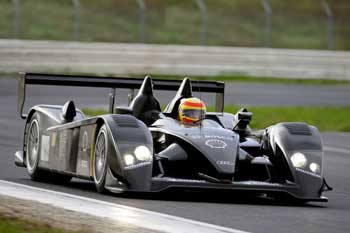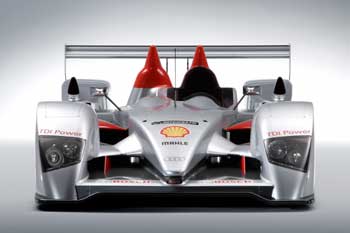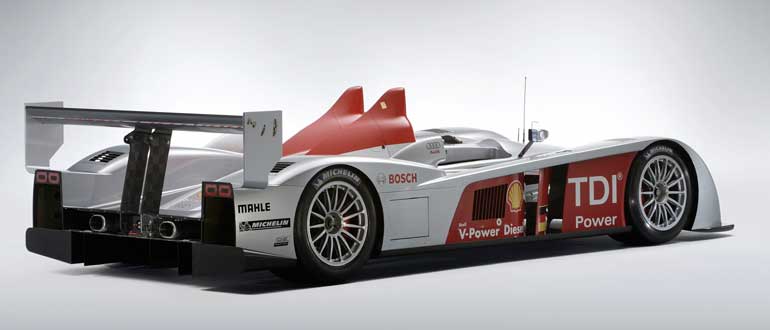|
"The R10 project is the biggest challenge ever to have been handed
to Audi Sport,” says Head of Audi Motorsport Dr Wolfgang Ullrich.
"TDI technology has not been pushed to its limits in motorsport yet.
We are the first to confront the challenge. The demands of such a project
are accordingly high. Long-term technology partners such as Bosch, Michelin
or Shell support us in our quest. Together we have the chance to write
new chapters in the history books of motorsport and diesel technology.”
The new Audi R10 successfully completed its first test at the end of November.
An extensive test programme, including the 12-hour race at Sebring (USA)
on 18 March, is scheduled before the 24 Hours of Le Mans on 17/18 June
2006. The development team from Audi Sport is supported by Reinhold Joest’s
squad, which also performed this task during the R8 project.
|
The
Le Mans Prototype, with over 650 hp and more than 1100 Newton metres torque,
significantly exceeds the power produced by the majority of previous Audi
racing cars – including that of its victorious R8 predecessor. Audi
ventures into previously unexplored diesel-engine terrain with the V12
power plant manufactured completely from aluminium. As with the TFSI technology,
which triumphed initially at Le Mans before being adopted for mass-production,
Audi customers should benefit once again from the lessons learnt in motorsport.
"With the A8 4.2 TDI quattro, Audi already builds one of the most
powerful diesel cars in the world,” explains Prof Dr Martin Winterkorn,
Chairman of the Board of Management of AUDI AG. "The Le Mans project
will help our technicians to extract even more from TDI technology. Nowadays,
every second Audi is delivered with a TDI engine. We expect that the percentage
of diesel engines will be even larger in the future.”
The R10 prototype’s V12 power unit, which is equipped with two diesel
particle filters, is hardly recognisable as a diesel thanks to the engine’s
smooth running nature. The TDI engine’s specialities presented the
Audi Sport engineers with a whole list of challenges. The injection pressure
easily exceeds the 1600 bar achieved in production cars. The usable power
band lies between 3000 and 5000 revs per minute – an unusually low
rev range for a racing engine. The driver must change gear in the R10
far less often than in the R8 because of the TDI engine’s favourable
torque curve.

|






![]()

